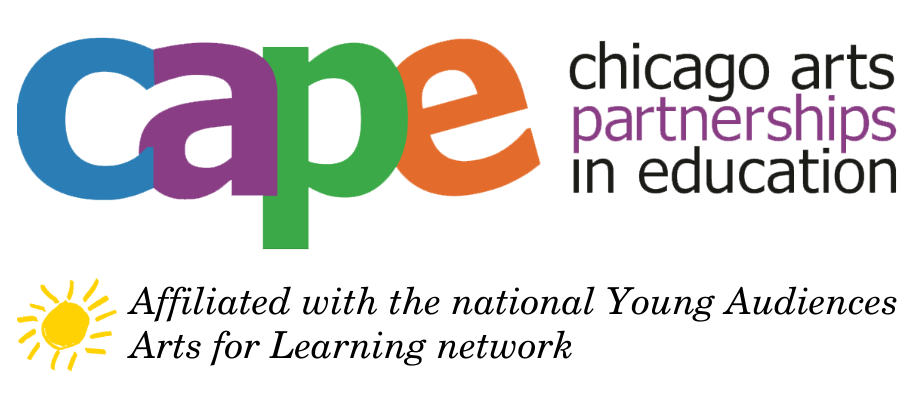It takes an army… of interns
For years upon years, CAPE has been graced by the sharp intellects, the technical knowhow, the visionary foresight, the undying energy, and quirky whimsy of interns.
In the past year or so, we have asked our interns to design and carry out their own research projects. They were each asked to engage in a topic that they themselves are curious about; develop their own inquiry or big idea; research the topic using CAPE archives, classroom observations, PD observations, online research, and source material; design their own final product; and ultimately, share out to the entire CAPE staff.
In the past this is what some of the CAPE intern projects have looked like:
Excerpt from An Examination of Music Integration
Agnes Kline, CAPE Research Intern, Summer 2012:
“In addition to benefiting the students, music integration partnerships also benefit the teachers. When asked in a post-survey how she felt she was improving as a teacher, one teacher replied, “I am seeing that I need to allow students more opportunities to contribute their thoughts/ideas to the product. They liked to share their thoughts”. Similarly, another teacher from the same program replied to the same question with, “Self-reflecting and allowing more integration with the arts allowing greater student choice and individuality”. Arts partnerships are important because not only do they expose students to new ways of learning, but they allow teachers to explore new ways of teaching.
While arts partnerships are beneficial to student and teacher, due to a myriad of reasons, their implementation can be difficult. For instance, a conflict of teaching philosophy and/or personality between classroom teacher and teaching artist can make beginning a partnership extremely difficult, let alone carrying it on throughout the year. In order for an arts partnership to work, both teacher and teaching artist must be open to change and work as a team. An unwillingness to accept new ideas can mean the death of a partnership before it even begins.”
Excerpt from CAPE Research from Founding to Present: An Breakdown of Research Focus Areas,
Claire Meyers, CAPE Research/Marketing Intern, Fall 2013:
Graphic Design Project, SCALE School Event Posters,
Soo Ji CAPE Research Intern, Spring and Summer 2013

In all the examples above, the interns built upon their own skills to delve into their areas of investigation. Agnes was pursuing here Bachelor’s degree in Music and Music Education, so she used a more traditional academic approach towards investigating best practices in arts integration methodology. Claire was pursuing a degree in arts management and wanted to learn about which program outcomes were of the most interest for an organization like CAPE (e.g. Academic outcomes, social-emotional outcomes, School-Wide Engagement, etc.). In Claire’s project, she completed a meta-analysis of all CAPE research to date- thanks Claire! For Soo Ji, who is pursuing a career in graphic design, she was curious how to best market education-based events and capture the essence of a arts integration program through graphic design. Soo Ji’s designs were used for promoting student performance events that same year.
Special thanks to these interns and all of the CAPE interns who have contributed so much time and energy to the organization and have made our office a place of learning and exploration.
Contributor:
Joseph Spilberg, Research Associate




